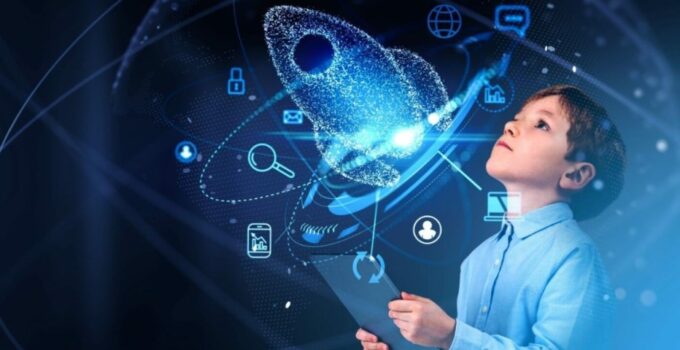
Source: linkedin.com
In today’s world, data and technology permeate every aspect of our lives, and education is no exception. Data-driven insights are transforming education in ways that were previously only thought of by sci-fi writers.
Data is making classrooms smarter, students more successful, and education systems more efficient.
Page Contents
Personalized learning
Remember those days when teachers thought everyone learned the same way? Data has the potential to rescue us from the “one size fits all” approach. By analyzing individual student data, educators can tailor instruction to each student’s needs, pace, and learning style.
Imagine a student struggling with fractions while excelling in geometry. Data can help teachers adjust their lesson plans to ensure each student gets the support they need where they need it most.
Early intervention
Data analytics don’t quite make for a crystal ball, but by identifying students at risk of falling behind or dropping out, educators can provide timely support. If a student is consistently failing their math tests, data analytics can flag this early, allowing teachers to intervene with extra help or tutoring before the student decides to ditch math completely.
Early intervention can make the difference between a student who struggles and one who thrives and enjoys learning.
The benefits of interactive projectors
A classroom projector can play a significant role in data-driven education. Projectors bridge the gap between digital data and the physical classroom. Teachers can use projectors to conduct real-time quizzes and polls and see their students’ performance.
Interactive projectors can transform any surface into an interactive learning space. A projector game allows students to interact and collaborate, improving their social and teamwork skills. Educators can track students’ data and performance in different educational games.

Source: techlearning.com
Curriculum optimization
Data helps schools assess the effectiveness of different teaching methods and materials. Did that new interactive history app boost student engagement? Did the hands-on science experiments lead to better understanding? By analyzing this data, schools can refine their curricula to incorporate what works best. It’s like Marie Kondo’s KonMari method, but for lesson plans—keeping what sparks joy (and learning) and discarding what doesn’t.
Predictive analytics
Predictive analytics might sound like an imprecise tool, but they can be extremely useful. Educational institutions can forecast trends in enrollment, performance, and resource needs. If data shows that enrollment in computer science courses is set to spike, schools can prepare by hiring more instructors and expanding facilities. No more last-minute decisions – predictive analytics keeps schools one step ahead.
Adaptive assessments
Adaptive assessments adjust their difficulty based on student responses, providing more accurate measurements of ability. It’s like playing a video game that gets harder or easier depending on how well you’re doing. This ensures that a test is not too easy, and not too hard – each student is challenged just the right amount.

Source: linkedin.com
Resource allocation
Data is here to save administrators’ headspace. Need more teachers for that successful STEM program? Should you invest in more digital tablets or refurbish the old library? Data-driven insights help to make informed decisions about staffing, funding, and program investments.
Performance benchmarking
Data allows schools and districts to compare their outcomes to similar institutions, identifying areas for improvement. Is your school lagging behind in math scores compared to a neighboring district? Benchmarking can help pinpoint the issue and provide solutions.
Teacher professional development
Data on classroom performance can guide targeted training for educators. If data shows that students struggle with reading comprehension in certain classes, professional development can focus on improving those skills. Teachers can receive a tailor-made plan to help them – and help their students.

Source: neeadvantage.com
Evidence-based policies
Education policymakers can use large-scale data to inform decisions at the district, state, or national level. Data can help inform decision-makers whether an arts program should receive more funding, or whether schools in the state are meeting their STEM targets. It’s policymaking that’s based less on guesswork, and more on facts.
The Bottom Line
Data has transformed every industry it’s been harnessed in. It opens up new avenues for leaders and practitioners to learn from and apply them in transformative ways. Education cannot be exempt – it’s all about learning and teaching! From new policies to new tech, revolutions in the classroom are necessary and can be made more efficient and impactful when data gives deeper perspectives and insightful evidence.





